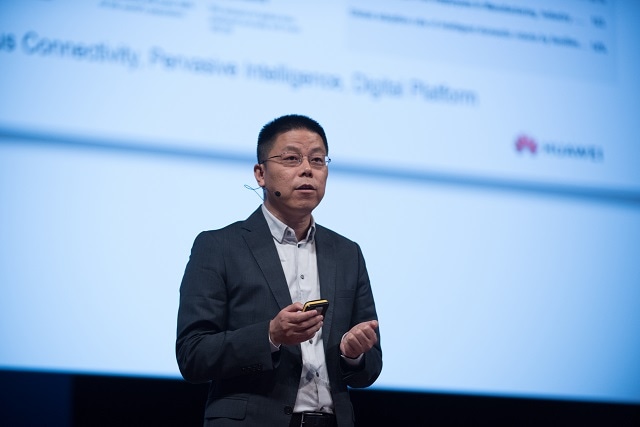Huawei Proposed an Autonomous Driving Network Strategy, an Architecture Innovation Tackling Structural Challenges of the Telecom Industry
[The Hague, Netherlands, October 16, 2019] With the development of telecom networks and AI technologies, the industry has reached consensus that networks will become more intelligent. Huawei made its appearance at the SDN NFV World Congress in 2019 with the theme "Evolving to an Autonomous Driving Network", presenting its research on the next-generation intelligent network architecture. This was the Huawei's industry debut of its autonomous driving network strategy.
On October 16, Yuan Bo, director of the Network Architecture Transformation Marketing Dept of Carrier BG, delivered a Keynote speech on the prospective architecture of the autonomous driving network and joint innovation practices of carriers.

Keynote speech at the SDN NFV World Congress 2019, by Yuan Bo
Huawei proposed different levels of driving automation to apply to carriers' core operation processes in different scenarios and promoted gradual implementation of network intelligence. The Huawei autonomous driving network features a simplified architecture and intelligent O&M. On one hand, the architecture of the network, from wireless, transport and core networks to the edge cloud, is all simplified to provide a foundation for autonomous driving. On the other hand, network O&M is more intelligent. Huawei launched iMaster intelligent O&M solutions that enable intelligent closed-loop O&M through intra-domain autonomy and inter-domain collaboration. iMaster NCE is intended for FBB, iMaster MAE for MBB, and iMaster AUTIN for inter-domain collaboration. iMaster NAIE provides an AI training platform, a data lake, and a reasoning framework, making it easier to apply AI technologies in the telecom industry and helping carriers, their partners, and third-party developers improve AI development efficiency.
Over past decade, as 2G, 3G, and 4G have evolved, networks have become more and more complex. Carrier OPEX has become more than three times their CAPEX and this is increasing year by year with the structural problems in their networks. These problems will become more serious with 5G if network O&M continues to rely on traditional methods. The Huawei autonomous driving network is dedicated to providing carriers with optimal TCO and user experience and tackling structural challenges.
First, Huawei aims to simplify sites, architectures, and protocols to build a simplified network. For example, more than 10 IP network communications protocols are reduced to 2 protocols, significantly reducing the number of service nodes and lessening workloads in cross-department communication. Network configuration and service rollout are mode more efficient with these practices.
Second, Huawei introduces new technologies such as network automation, AI, and Digital Twin to help carriers improve energy efficiency, resource utilization, and O&M efficiency, thereby reducing OPEX. For example: Huawei uses the AI technology to reduce energy consumption, which can help carriers build accurate traffic prediction models and predict service loads to dynamically allocate energy. This will help gradually achieve the goal "Bits drive Watts".
As 5G and AI develop, the network will grow more and more intelligent, but this is a long-period endeavor. Huawei is always trying to build a future-oriented, open autonomous driving network. Yuan Bo said in his Keynote speech that Huawei is willing to work with all of you to create a clear direction for intelligent networks to bring autonomous driving to everyone.

